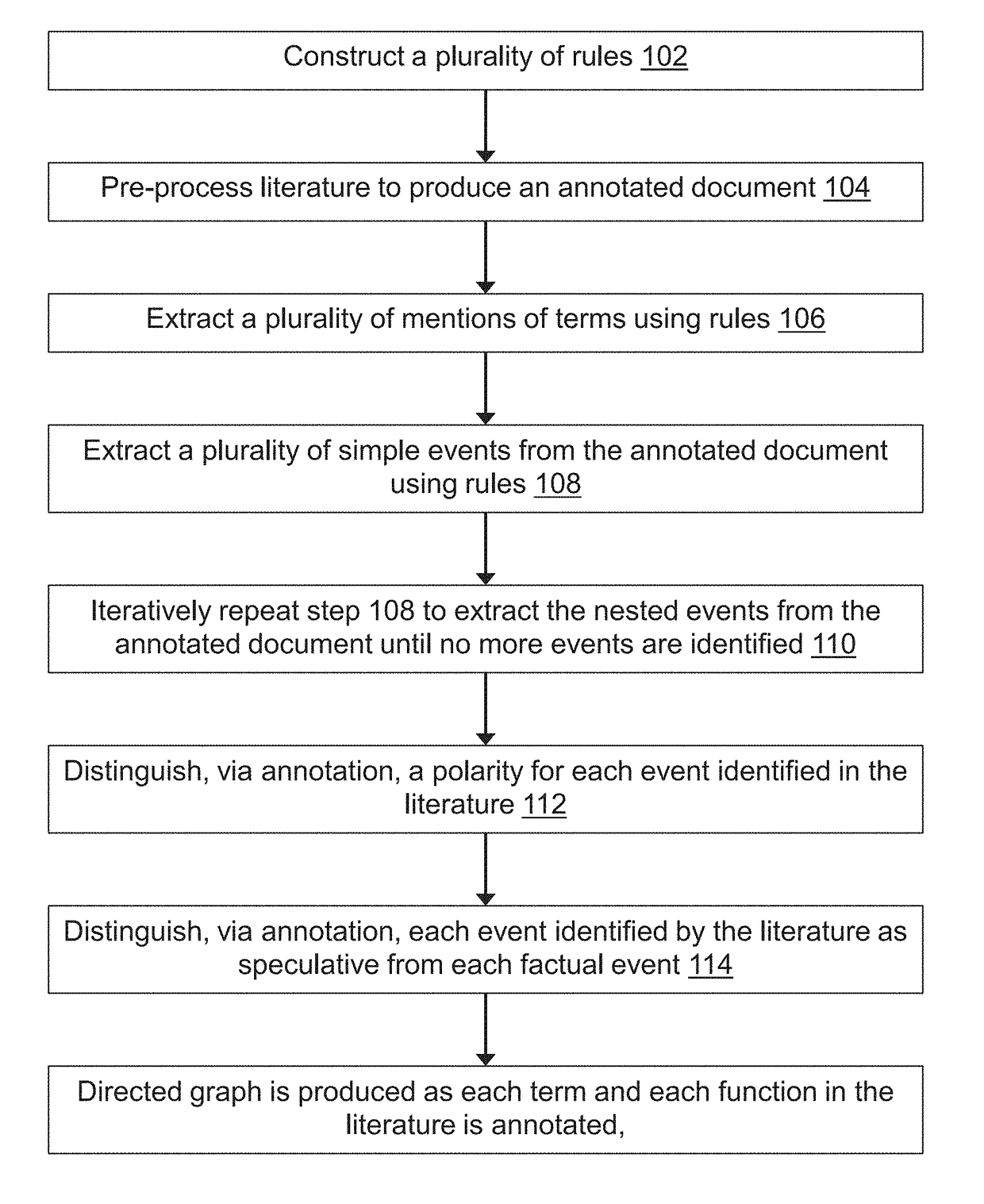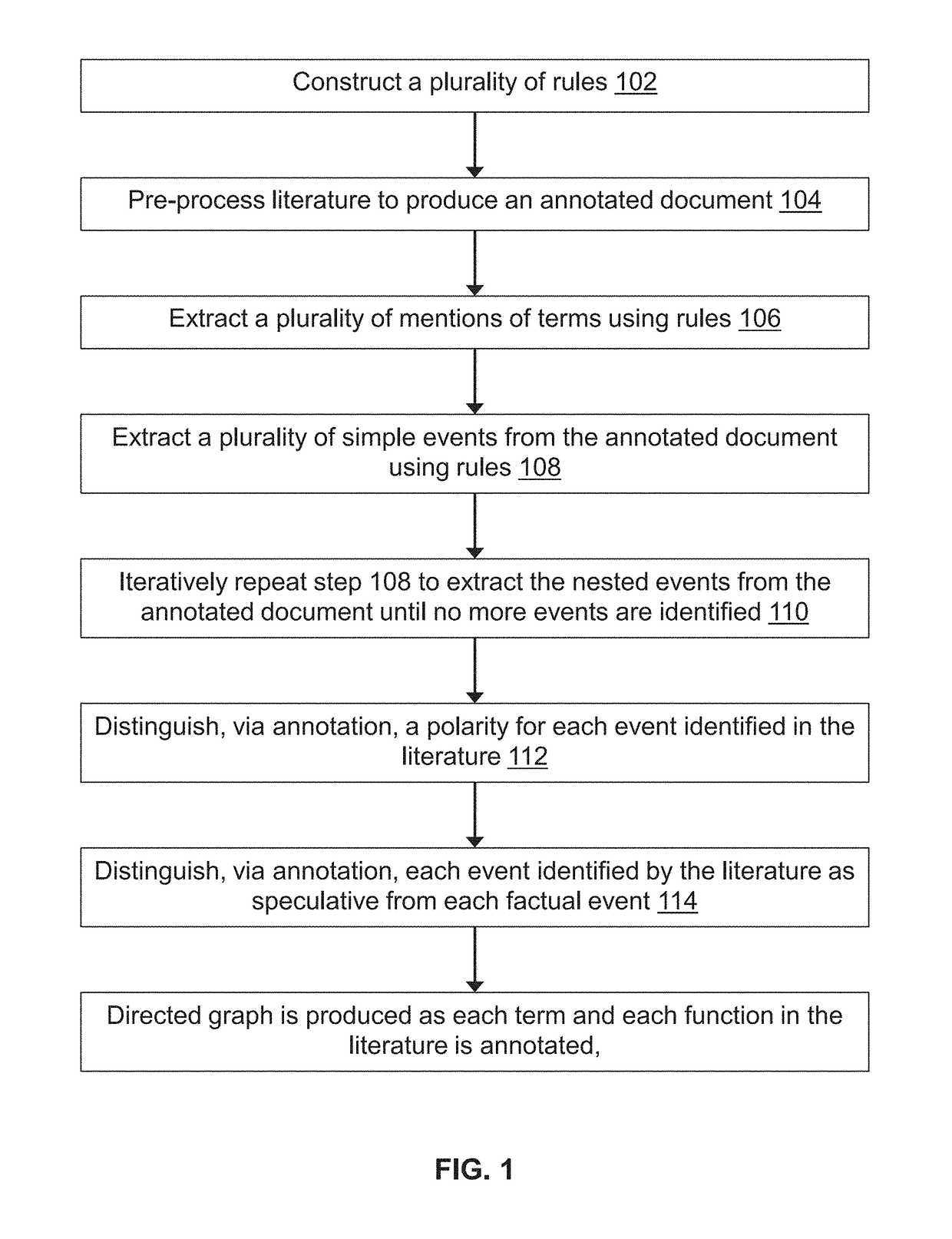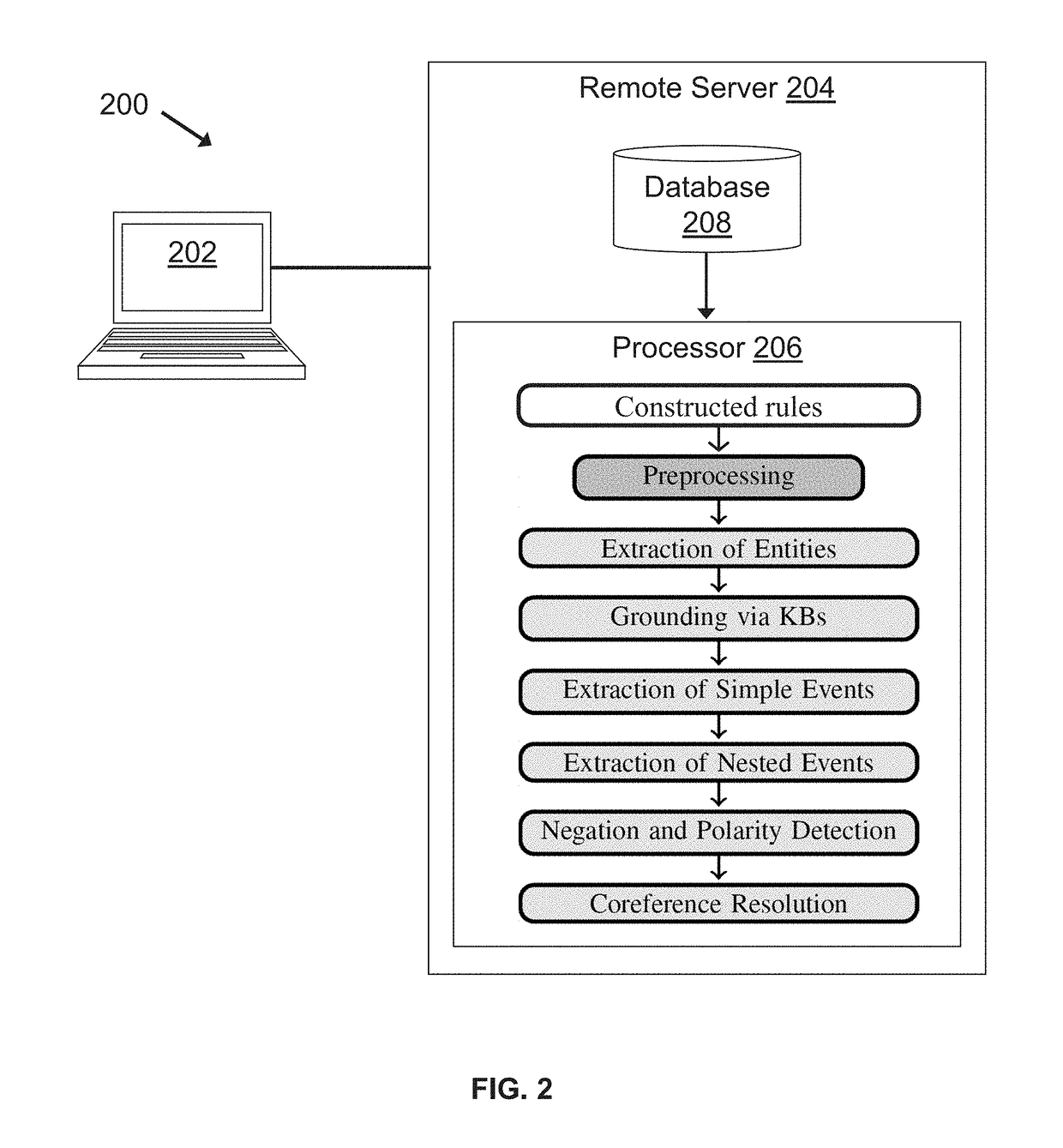Methods for extracting and assessing information from literature documents
a literature document and information extraction technology, applied in the field of information extraction methods, can solve the problems of large gaps in the value of big data in biology, the literature is out-scaled by the explosive growth of the literature, and the most of the mechanistic knowledge in the literature is not computable and mostly remains hidden
- Summary
- Abstract
- Description
- Claims
- Application Information
AI Technical Summary
Benefits of technology
Problems solved by technology
Method used
Image
Examples
example
[0096]The following is non-limiting example of the present invention. Said example is not intended to limit the invention in any way, equivalents or substitutes are within the scope of the invention.
[0097]Furthermore, while the following example illustrates the present invention being applied in the biomedical domain, it is to be understood that the invention can be applied in non-biomedical domains. Some non-limiting domains where the present technology could be applied include children's health or intelligence. For example, the domain of children's health is multi-disciplinary, and to understand what causes malnutrition in children, one has to inspect biology, environmental sciences (there are links between pollution and malnutrition), education (the education of the parents impacts the well-being of the child), etc. Similarly, this type of influence relations impacts the field of intelligence, where an analyst might mine for influence patterns that explain a certain terrorist eve...
PUM
 Login to View More
Login to View More Abstract
Description
Claims
Application Information
 Login to View More
Login to View More - R&D
- Intellectual Property
- Life Sciences
- Materials
- Tech Scout
- Unparalleled Data Quality
- Higher Quality Content
- 60% Fewer Hallucinations
Browse by: Latest US Patents, China's latest patents, Technical Efficacy Thesaurus, Application Domain, Technology Topic, Popular Technical Reports.
© 2025 PatSnap. All rights reserved.Legal|Privacy policy|Modern Slavery Act Transparency Statement|Sitemap|About US| Contact US: help@patsnap.com



